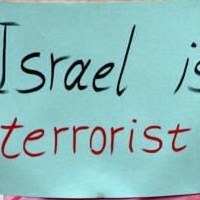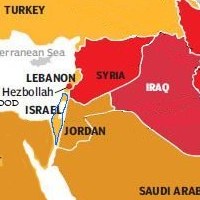Published in the Wall Street Journal; december 30, 2009.
by Danny Ayalon (Mr. Ayalon is the deputy foreign minister of Israel).
The recent statements by the European Union’s new foreign relations chief Catherine Ashton criticizing Israel have once again brought international attention to Jerusalem and the settlements. However, little appears to be truly understood about Israel’s rights to what are generally called the “occupied territories” but what really are “disputed territories.”
That’s because the land now known as the West Bank cannot be considered “occupied” in the legal sense of the word as it had not attained recognized sovereignty before Israel’s conquest. Contrary to some beliefs there has never been a Palestinian state, and no other nation has ever established Jerusalem as its capital despite it being under Islamic control for hundreds of years.
The name “West Bank” was first used in 1950 by the Jordanians when they annexed the land to differentiate it from the rest of the country, which is on the east bank of the river Jordan. The boundaries of this territory were set only one year before during the armistice agreement between Israel and Jordan that ended the war that began in 1948 when five Arab armies invaded the nascent Jewish State. It was at Jordan’s insistence that the 1949 armistice line became not a recognized international border but only a line separating armies. The Armistice Agreement specifically stated: “No provision of this Agreement shall in any way prejudice the rights, claims, and positions of either Party hereto in the peaceful settlement of the Palestine questions, the provisions of this Agreement being dictated exclusively by military considerations.” (Italics added.) This boundary became the famous “Green Line,” so named because the military officials during the armistice talks used a green pen to draw the line on the map.
After the Six Day War, when once again Arab armies sought to destroy Israel and the Jewish state subsequently captured the West Bank and other territory, the United Nations sought to create an enduring solution to the conflict. U.N. Security Council Resolution 242 is probably one of the most misunderstood documents in the international arena. While many, especially the Palestinians, push the idea that the document demands that Israel return everything captured over the Green Line, nothing could be further from the truth. The resolution calls for “peace within secure and recognized boundaries,” but nowhere does it mention where those boundaries should be.
It is best to understand the intentions of the drafters of the resolution before considering other interpretations. Eugene V. Rostow, U.S. Undersecretary of State for Political Affairs in 1967 and a drafter of the resolution, stated in 1990: “Security Council Resolution 242 and (subsequent U.N. Security Council Resolution) 338… rest on two principles, Israel may administer the territory until its Arab neighbors make peace; and when peace is made, Israel should withdraw to “secure and recognized borders,” which need not be the same as the Armistice Demarcation Lines of 1949.”
Lord Caradon, the British U.N. Ambassador at the time and the resolution’s main drafter who introduced it to the Council, said in 1974 unequivocally that, “It would have been wrong to demand that Israel return to its positions of June 4, 1967, because those positions were undesirable and artificial.”
The U.S. ambassador to the U.N. at the time, former Supreme Court Justice Arthur Goldberg, made the issue even clearer when he stated in 1973 that, “the resolution speaks of withdrawal from occupied territories without defining the extent of withdrawal.” This would encompass “less than a complete withdrawal of Israeli forces from occupied territory, inasmuch as Israel’s prior frontiers had proven to be notably insecure.”
Even the Soviet delegate to the U.N., Vasily Kuznetsov, who fought against the final text, conceded that the resolution gave Israel the right to “withdraw its forces only to those lines it considers appropriate.”
After the war in 1967, when Jews started returning to their historic heartland in the West Bank, or Judea and Samaria, as the territory had been known around the world for 2,000 years until the Jordanians renamed it, the issue of settlements arose. However, Rostow found no legal impediment to Jewish settlement in these territories. He maintained that the original British Mandate of Palestine still applies to the West Bank. He said “the Jewish right of settlement in Palestine west of the Jordan River, that is, in Israel, the West Bank, Jerusalem, was made unassailable. That right has never been terminated and cannot be terminated except by a recognized peace between Israel and its neighbors.” There is no internationally binding document pertaining to this territory that has nullified this right of Jewish settlement since.
And yet, there is this perception that Israel is occupying stolen land and that the Palestinians are the only party with national, legal and historic rights to it. Not only is this morally and factually incorrect, but the more this narrative is being accepted, the less likely the Palestinians feel the need to come to the negotiating table. Statements like those of Lady Ashton’s are not only incorrect; they push a negotiated solution further away.
Mazzeltov,
Crethi Plethi



 RSS
RSS











Israel and the Disputed Territories #israel http://j.mp/bkJJwk
RT @CrethiPlethi: Israel and the Disputed Territories #israel http://j.mp/bkJJwk
[…] This post was mentioned on Twitter by Crethi Plethi, Leon. Leon said: RT @CrethiPlethi: Israel and the Disputed Territories #israel http://j.mp/bkJJwk […]